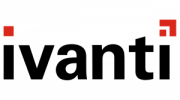How to Properly Use Personality Testing to Get the Right “Fit”
Incorporating personality tests into your recruitment process can help provide your company with additional information about candidates. For instance, tests can reveal if a candidate is more extroverted or introverted. In addition to interviews, it can be helpful to have a numeric representation of each candidate to help facilitate more nuanced comparisons between otherwise equally qualified applicants.
But before you use personality testing with job candidates, make sure you know how to do it properly. It’s estimated that approximately 22% of companies use tests to assess job candidates. There are so many different kinds of tests out there that it’s all too easy to choose the wrong one. Human Resources departments need to be careful because incorrectly applied, personality tests can inadvertently lead to discrimination.
Here’s how companies can properly use personality testing to assess “fit.” Remember, a personality test should be just one of many elements that a hiring team uses to evaluate candidates.
Make “fit” measurable
Start by figuring out what elements would make someone a “fit” with the company culture. Then, quantity them and find a test that can measure them. In this phase, it can be useful to involve current employees in determining what elements would make someone fit in. For instance, perhaps safety mindfulness and attention to detail are important at your company. A good test can help you understand how a candidate might fit into a role or team dynamic, as well as their communication style and decision-making skills.
Choose the right personality tests
You’ve probably heard of the Myers-Briggs test. But did you know that the test publisher never intended it to be used for candidate assessment? “People of many different types excel at the same job for different reasons,” their website states. The Myers-Briggs is more about providing insight for personal and professional development, rather than culture fit for employment.
Common tests include the Caliper Profile (which allows companies to customize their questions around specific criteria), the SHL Occupational Personality Questionnaire, the DiSC Behaviour Inventory, and the Hogan Personality Inventory (HPI).
However, there are lots of tests that companies should avoid because they are outdated or because they measure a candidate’s current state rather than their actual personality. For instance, experts recommend avoiding four-quadrant tests in the candidate assessment phase because they mostly reveal a person’s current state of mind. Stay away from tests that ask medically-relevant questions, such as how often the candidate feels happy.
Tests are not the final determinant
If your company uses personality testing, make sure you don’t use the test as a sole or final determinant. Be mindful of inclusivity and accessibility and try to get a holistic view of candidates. For instance, a person may answer negatively when asked about post-work events or travel. Without a holistic view of the candidate, these kinds of questions would exclude parents with kids who may not be able to do post-work events or people who live far from the office.
McKinsey reports that companies in the top quartile for racial diversity are a stunning 33% more likely to perform better than companies in the bottom quartile. Inclusivity and accessibility are not only ethical, but they are also smart business practices. Homogeneity in a team can lead to groupthink. Companies risk falling victim to homogenous teams when they make a hire just because the candidate is a “fit.”
Tests should be used as part of a wider range of candidate assessment techniques.
New trends in personality testing
In the search for a career that fits them, Gen Z applicants can now play games to give potential employers a better understanding of how they think. Pymetrics and Knack are two companies that use online games to intuit users’ thought patterns.
As you research the right test for your company, make sure you select one that assesses stable traits, has high reliability, and that can help you compare one candidate to one another with individual scores. Keep in mind that you don’t always want someone who will “fit” in. Unexpected candidates with very different personalities can make great additions to established teams! Leave open the possibility that a candidate could be a “culture add” instead of a “culture fit.” Don’t let sameness be the defining factor in extending a job offer to a candidate.












